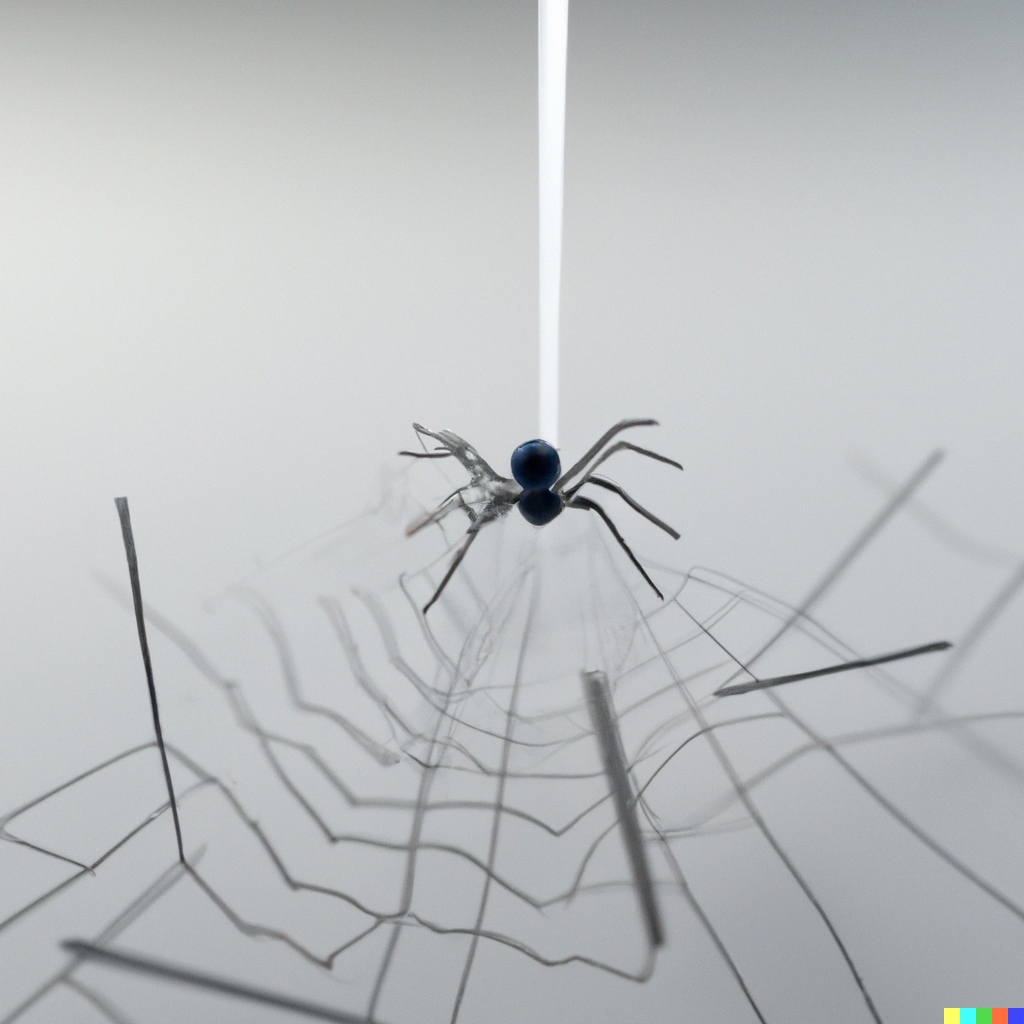Web of Connection: Breaking the Cycle of Wasp Infestations by Removing Spiders and Their Webs
September 15, 2023

How Web Eater Can Help With Wasps
As warmer months give way to autumn’s cool embrace, homeowners often breathe a sigh of relief as outdoor activities become more enjoyable without the constant buzzing of wasps and dirt dauber wasps. These flying insects can quickly turn a serene outdoor space into a battle zone, making it essential to understand their behavior and address the root cause of their presence. Surprisingly, a simple solution lies in the intricate connection between spiders, their webs, and the wasps that plague our surroundings.
The Intricate Connection
Spiders and wasps share a complex relationship that is deeply intertwined with the delicate balance of nature. While spiders are often regarded as fearsome predators, they are not immune to predation themselves. Among their many prey, wasps stand out as significant contributors to a spider’s diet. Spiders capture wasps in their sticky webs, providing a crucial source of sustenance that aids in their survival and reproduction.
The Wasp Predicament
Wasps, including dirt dauber wasps, feed on nectar, pollen, and other insects. However, they are also opportunistic predators, seeking out other arthropods as food for their larvae. Spiders, being protein-rich and relatively immobile in their webs, become prime targets for wasp hunting. Female wasps immobilize spiders with their venomous stings, then carry the paralyzed arachnids back to their nests as provisions for their developing young.
Breaking the Cycle
Understanding the intricate dynamics between spiders, wasps, and their interdependence provides homeowners with a unique opportunity to manage wasp populations more effectively. By focusing on reducing spider populations and removing their webs, you can effectively disrupt the cycle of wasp infestations. Without their primary food source readily available, wasps will be less likely to establish nests in your immediate surroundings.
Practical Steps
1.) Regular Web Removal: Regularly inspect and remove spider webs around your property, especially in areas where wasps are commonly found. Pay attention to eaves, corners, windows, and outdoor furniture. By eliminating spider webs, you’re essentially removing the invitation for wasps to establish a foothold.
2.) Natural Predators: Encourage natural predators of wasps, such as birds and certain insects, to frequent your yard. Providing nesting sites and bird feeders can attract avian species that help keep wasp populations in check.
3.) Sealing Entry Points: Inspect your home for potential entry points that may allow wasps to build nests inside. Seal gaps and cracks in walls, windows, and doors to prevent wasp incursions.
4.) Plant Selection: Choose plant species that naturally repel wasps. Mint, eucalyptus, and marigold are examples of plants that wasps tend to avoid due to their strong scents.
Conclusion
As autumn arrives and the prospect of spending more time outdoors becomes inviting, the presence of wasps and dirt dauber wasps can quickly dampen the joy of outdoor activities. Understanding the delicate balance between spiders, their webs, and wasps provides a novel approach to managing wasp populations without resorting to harmful chemicals or aggressive interventions. By taking proactive steps to remove spider webs and thus reduce the availability of wasp prey, homeowners can enjoy a more wasp-free environment, enhancing their outdoor experiences and promoting a harmonious coexistence with the natural world.


